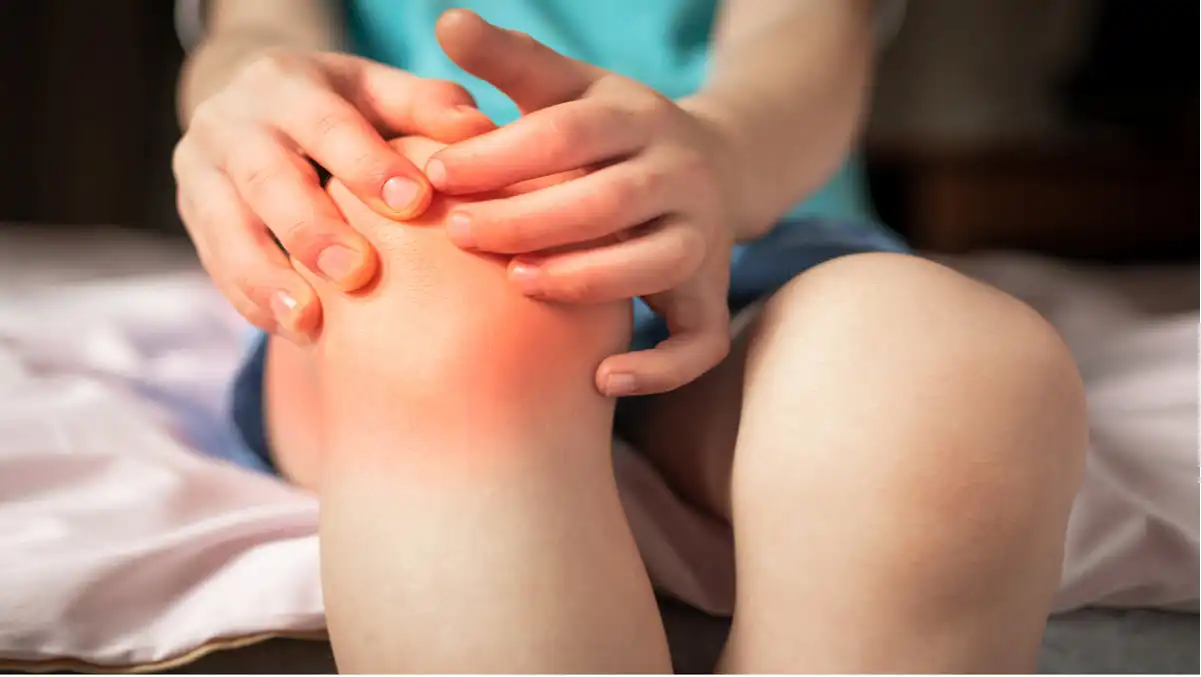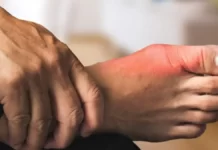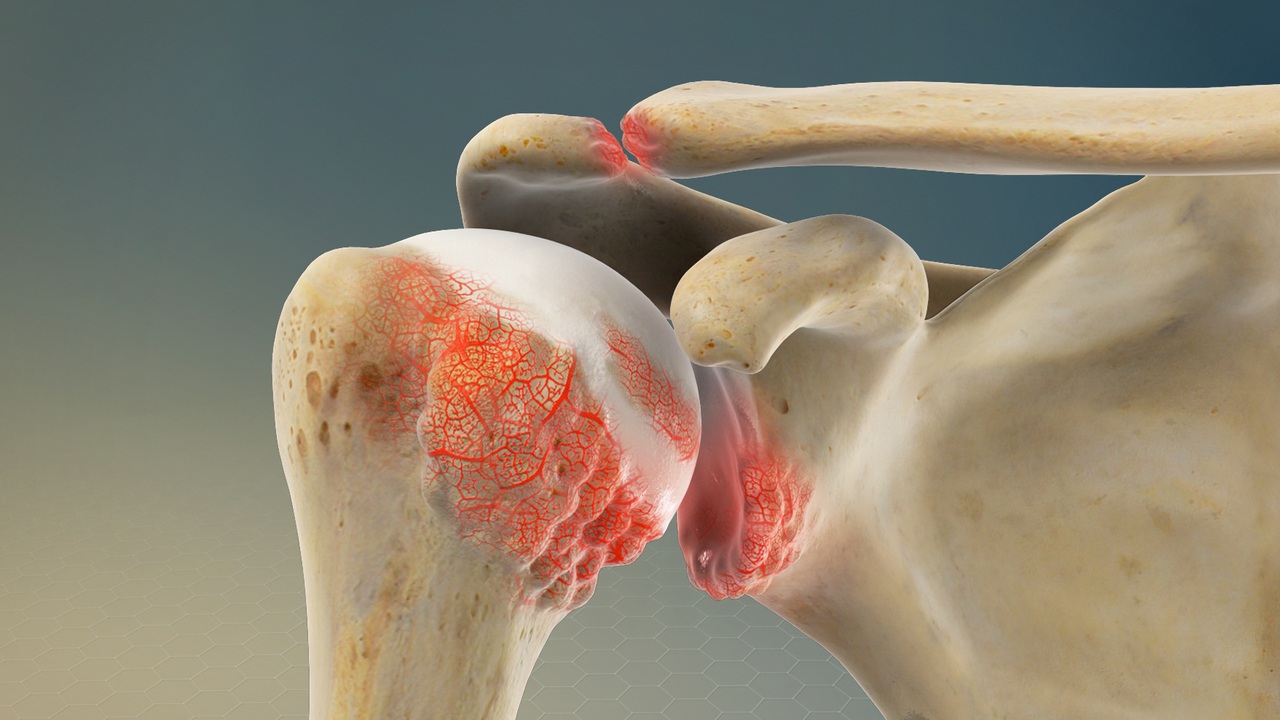Introduction
Juvenile arthritis is a complex and often overlooked medical condition that affects children and adolescents. It is characterized by inflammation of the joints, causing pain, stiffness and swelling. As an osteopath, I find it essential to raise awareness of this condition, as it can have a significant impact on the daily lives of young patients.
The causes of juvenile arthritis are not fully understood, but genetic, environmental and immunological factors may contribute to its development. As a practitioner, I strive to take these aspects into account in my therapeutic approach, working closely with other health professionals to provide a holistic approach.
Management of juvenile arthritis often involves a combination of medical treatments, physiotherapy and, in some cases, osteopathy. My role as an osteopath is to assess joint mobility, identify structural imbalances and apply manual techniques to improve joint function and relieve pain.
It is crucial to recognize the psychosocial aspects of juvenile arthritis, as the disease can impact the emotional and social quality of life of young patients. As editor of Osteomag, I pay particular attention to raising public awareness of these aspects, encouraging understanding and empathy towards those living with this condition.
Types of Juvenile Arthritis
The first type of juvenile arthritis is systemic arthritis, also known as systemic juvenile idiopathic arthritis (SJIA). This form affects not only the joints, but also other parts of the body, especially the internal organs. Symptoms may include persistent fever, exhaustion, and rash. As a practitioner, I remain attentive to these systemic manifestations, collaborating closely with other health professionals for comprehensive care.
Another variation is oligoarticular arthritis, characterized by inflammation of fewer than five joints. It is common in young people and can sometimes affect the eyes, requiring close monitoring. My role as an osteopath is to assess joint mobility, with a focus on the specifically affected joints.
Polyarticular arthritis affects five or more joints and can be of two subtypes: rheumatoid positive or negative. This form of juvenile arthritis can cause morning stiffness and persistent fatigue. In my practice, I strive to personalize treatments based on each patient’s subtype and specific needs.
Finally, enthesitis-related arthritis (ERA) is a form of juvenile arthritis linked to the enthesis, the area where tendons and ligaments attach to bones. It can affect the joints of the lower back, hips and knees. As an osteopath, I am aware of the implications of this variation on mobility and posture, adapting my techniques accordingly.
1. Systemic Arthritis:
- Characteristics : Affects the entire body, including internal organs.
- Prevalence: Less common, but more serious.
- Manifestations: Fever, rash, inflammation of internal organs, as well as joint symptoms.
2. Oligoarticular Arthritis:
- Characteristics: Affects up to four joints.
- Prevalence: This is the most common type of juvenile arthritis.
- Manifestations: Often asymptomatic, but can progress to polyarticular arthritis.
3. Polyarticular Arthritis:
- Characteristics: Affects five or more joints.
- Prevalence: May affect small or large joints.
- Manifestations: Generalized joint inflammation, often similar to rheumatoid arthritis in adults.
4. Arthritis Associated with Enthesitis:
- Characteristics : Involves inflammation of the entheses (areas of attachment of tendons to bones) .
- Prevalence: Often seen in older adolescents.
- Manifestations: Pain at the tendon attachment points, particularly near the joints.
5. Arthritis Associated with Uveitis:
- Characteristics: Associated with inflammation of the uvea, the central part of the eye.
- Prevalence : May occur with other types of juvenile arthritis.
- Manifestations: Eye problems such as redness, pain and blurred vision.
Pathophysiology of juvenile arthritis
The pathophysiology of juvenile arthritis involves complex processes linked to dysregulation of the immune system, leading to chronic joint inflammation in children. Although the exact mechanisms are not fully understood, several aspects of the pathophysiology of juvenile arthritis have been identified:
- Inappropriate immune response: In juvenile arthritis, children’s immune systems react inappropriately and attack healthy joint tissue. This abnormal immune response leads to persistent inflammation.
- Genetic factors: Genetic predispositions may play a role in a child’s susceptibility to developing juvenile arthritis. Certain genes associated with the regulation of the immune system have been identified as being linked to the disease.
- Environmental factors: Certain environmental triggers, such as viral or bacterial infections, can trigger the abnormal immune response in genetically predisposed children.
- Synovial inflammation: Inflammation mainly affects the synovial membrane which lines the inside of the joints. This synovial inflammation leads to excessive production of synovial fluid, causing the joints to swell.
- Cytokine production: Activated immune cells in joints release cytokines, proteins that regulate inflammation. Pro-inflammatory cytokines, such as TNF-alpha and IL-6, play a key role in the spread of inflammation.
- Cartilage and bone damage: Chronic inflammation damages articular cartilage and subchondral bone, leading to joint erosions and degenerative changes over time.
- Autoimmune response: Some subtypes of juvenile arthritis, such as uveitis-associated arthritis, involve an autoimmune response that also affects other parts of the body, such as the eyes.
- Activation of immune cells: Immune cells, such as T cells and macrophages, are activated in joints, contributing to inflammation and tissue damage.
Causes of juvenile arthritis
Juvenile arthritis, an inflammatory joint condition that affects children and adolescents, has complex and multifactorial origins. As an osteopath involved in the management of this disease, understanding the underlying causes is crucial to developing targeted and personalized therapeutic approaches.
Genetic factors play a major role in the onset of juvenile arthritis. A family history of arthritis or other autoimmune diseases may increase a child’s risk. As a healthcare professional, I strive to obtain detailed information about my patients’ family histories to better understand the genetic basis of disease.
Environmental factors are also important determinants of juvenile arthritis. Viral or bacterial infections can trigger an autoimmune response, contributing to the development of the disease. As a caring osteopath, I work closely with other healthcare professionals to assess relevant environmental aspects and design prevention strategies.
The immune system plays a key role in juvenile arthritis, and abnormalities in its regulation can lead to joint inflammation. In-depth research into the immunological mechanisms underlying the disease is crucial to developing more targeted treatments. As a practitioner, I am constantly informed of advances in this field to improve the quality of care I provide to my young patients.
Some forms of juvenile arthritis, such as systemic juvenile idiopathic arthritis (SJIA), have unique characteristics with systemic inflammation also affecting other organs. Understanding these systemic manifestations is essential for comprehensive care. As an osteopath, I work collaboratively with other healthcare professionals to integrate these aspects into the treatment plan.
- Joint Pain: Pain is one of the most common symptoms of juvenile arthritis. Children may complain of persistent pain in the joints, often seen in the morning or after a period of inactivity.
- Joint stiffness: Affected joints may be stiff, especially in the morning or after a nap. This stiffness may ease throughout the day as the child becomes more active.
- Joint swelling: Affected joints may be swollen, warm, and have visible swelling. This is often linked to joint inflammation.
- Limited mobility: Due to pain and swelling, children with juvenile arthritis may experience limited joint mobility, which can affect their daily activities.
- Fatigue: Children with juvenile arthritis may experience significant fatigue, which may be related to the disease itself as well as the side effects of certain medications.
- Fever: Some children may develop a fever, especially early in the illness. Fever may be intermittent.
- Eye problems: In certain subtypes of juvenile arthritis, eye problems such as uveitis may occur, leading to inflammation of the eye.
- Uneven growth: In some children, juvenile arthritis can cause uneven growth in the affected limbs.
It’s important to note that symptoms can change over time, and not all children with juvenile arthritis have the same symptoms.
Symptoms of juvenile arthritis
Juvenile arthritis, an inflammatory joint disease that affects children and adolescents, presents with a variety of complex symptoms. As an osteopath, my awareness of these signs is essential for early diagnosis and appropriate treatment, aimed at improving the quality of life of young patients.
One of the predominant symptoms of juvenile arthritis is joint pain. Children may experience persistent pain, often described as a feeling of stiffness, limiting their mobility. As a practitioner, I am attentive to these complaints, adapting my osteopathic techniques to relieve pain and restore joint function.
Morning stiffness is also common in children with juvenile arthritis. Joints may be particularly stiff upon waking, which may affect the daily routine of young patients. My approach as an osteopath involves assessing joint mobility and implementing techniques to improve flexibility, thereby reducing the impact of morning stiffness.
Joint swelling is another common symptom of juvenile arthritis, resulting from inflammation. This can be observable visually and is often associated with a feeling of warmth in the affected area. As publisher of Osteomag, I strive to educate the public on recognizing these signs, encouraging rapid responsiveness for early diagnosis.
Fatigue is an often underestimated component of juvenile arthritis. Young patients may experience persistent fatigue, affecting their energy and participation in daily activities. My holistic approach as an osteopath includes the consideration of these psychosocial aspects, aiming to improve the overall well-being of patients.
Growth variations are also seen in some children with juvenile arthritis. The disease can influence bone growth, requiring close monitoring by healthcare professionals to avoid possible complications. As an osteopath, I work in collaboration with other experts to ensure comprehensive care of these growth-related aspects.
- Joint Pain: Pain is one of the most common symptoms of juvenile arthritis. Children may complain of persistent pain in the joints, often seen in the morning or after a period of inactivity.
- Joint stiffness: Affected joints may be stiff, especially in the morning or after a nap. This stiffness may ease throughout the day as the child becomes more active.
- Joint swelling: Affected joints may be swollen, warm, and have visible swelling. This is often linked to joint inflammation.
- Limited mobility: Due to pain and swelling, children with juvenile arthritis may experience limited joint mobility, which can affect their daily activities.
- Fatigue: Children with juvenile arthritis may experience significant fatigue, which may be related to the disease itself as well as the side effects of certain medications.
- Fever: Some children may develop a fever, especially early in the illness. Fever may be intermittent.
- Eye problems: In certain subtypes of juvenile arthritis, eye problems such as uveitis may occur, leading to inflammation of the eye.
- Uneven growth: In some children, juvenile arthritis can cause uneven growth in the affected limbs.
It’s important to note that symptoms can change over time, and not all children with juvenile arthritis have the same symptoms. Early diagnosis and treatment are essential
Radiographic signs of juvenile arthritis
Radiographic signs of juvenile arthritis may vary depending on the specific subtype and extent of disease in a given child. However, here are some common radiographic signs associated with juvenile arthritis:
- Joint erosions: Areas of bone erosions may be visible on x-rays, resulting from chronic inflammation that damages cartilage and bone.
- Joint space widening: Joint inflammation can cause a widening of the space between adjacent bones, visible on x-rays.
- Growth abnormalities: Some children with juvenile arthritis may have growth abnormalities, such as uneven bone growth or bone deformities.
- Subchondral bones: X- rays may show changes in the subchondral bones, located just below the articular cartilage, due to inflammation and destruction of the cartilage.
- Epiphysitis: Juvenile arthritis can cause inflammation of the ends of bones, known as epiphysitis, which can be detected on x-rays.
- Joint pinching: As the disease progresses, the articular cartilage may become damaged, leading to pinching of the joint, visible on x-rays.
- Calcifications: In some cases, calcium deposits (calcifications) may form around joints in response to inflammation, and these may be visible on x-rays.


























